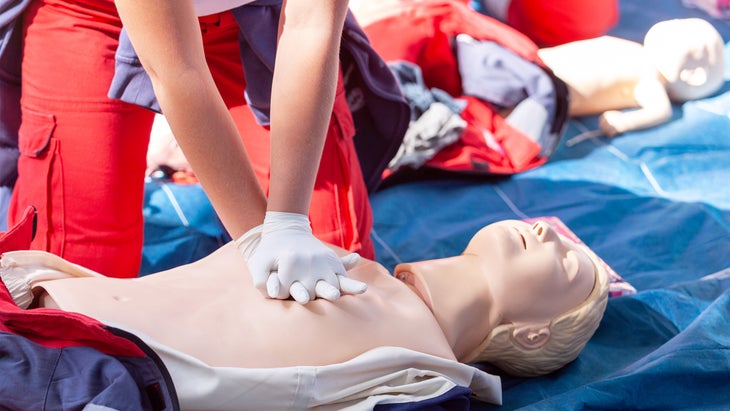Products You May Like
When I was 19 years old, I set out to thru-hike the Appalachian Trail armed with all the confidence of a clueless teenager who had dipped his titanium cooking pot into the ultralight Kool-Aid. My only nod toward safety supplies: Some duct tape wrapped around my water bottle and a few Advil. I’m not the only hiker who has sacrificed safety in search of ultralight nirvana before. After all, carting around heavy supplies that you may never put to use is contrary to the gram-counter’s way.
With more experience under my belt, I now know that a first aid kit is not the place to cut corners. Luckily, keeping your kit’s weight down without making compromises is easy to do. To help decipher what a good, weight-conscious first aid kit looks like, I talked to Justin Padgett, a wilderness guide, paramedic, and founder of Landmark Learning, a North Carolina-based wilderness medicine school. Here are his tips for best practices.
Be Prepared for Likely Events, Not Worst-Case Scenarios
Choosing what to carry is always about determining risk factors. “Your first aid kit isn’t designed to save the world, it’s designed to make do when things aren’t ideal,” says Padgett. A backpacking first aid kit doesn’t need to prepare you for the worst-case scenario—otherwise, we’d all be hitting the trail with a backboard and defibrillator. Instead, Padgett says hikers should be prepared for the most common ailments: blisters, burns, soft tissue injuries, and stomach issues. That means prioritizing things like moleskin, tape, gauze, disinfectants, and medicine for pain relief and upset stomachs.
Inventory Your Supplies
To make the most of your first aid kit, sift through its contents before and after trips. Not only will this keep you familiar with your supplies and ensure that you’re replacing items you’ve used, but it also gives you an opportunity to assess what you have and reevaluate. “People build a really nice first aid kit and then they don’t inventory it or monitor it,” Padgett says. One common culprit in an unmaintained kit? A surplus of expired meds. Consider switching to single-use packets or stocking your own pared-down pill pouches, especially for important medicines like antidiarrheals that you (hopefully) won’t use often. If you have a pre-made kit, check if it contains redundant items that you’re already carrying elsewhere in your pack, like cordage, a flashlight, or a firestarter.
Build Different Kits For Different Situations
If you’re serious about safety, it’s unlikely that one, static first-aid kit will be appropriate for every activity you undertake. For Padgett, his first aid kits vary in size according to whether he’s out hiking solo for the day, backpacking with a group of friends, or leading a group in a professional capacity. “My own personal kit is about the size of my fist, but I’ll carry much more if I’m responsible for other people,” he says. One way to gain confidence in a small first aid kit in your pack is to back it up with a full-service kit that stays with your vehicle at the trailhead.

Supplement Your Kit With Training
No matter what’s inside, it’s all dead weight unless you know how to use it in an emergency situation. Taking a wilderness first aid course is a great way to learn how to use the items you’re carrying and what can be left at home. “Wilderness medicine is all about being confident with having less and thinking out of the box,” says Padgett. “Education takes a lot of the imagination away about how to use a first aid kit and what you actually need.” Often, serious medical situations in the backcountry aren’t solved by first aid supplies, but by knowledge of symptoms, knowing when to evacuate, and how to create splints and litters out of your gear and clothing—all things you learn in a wilderness first aid or wilderness first responder class, not find in a first aid kit.
Accept Your First Aid Kit, No Matter the Weight
Even if you’re a gram-obsessed ultralighter, put the scale away when it comes to first aid supplies and evaluate things based on their usefulness instead of weight. Over a long career in backcountry medicine, Padgett has developed a preference for a few first aid items that are decidedly not ultralight. “I like having tweezers, shears, and a magnifying glass,” he says. “If I’m in the desert or somewhere else with scarce water, I also carry a small bottle of sterile water for wound care.” In these cases, safety and efficiency trump weight savings.
